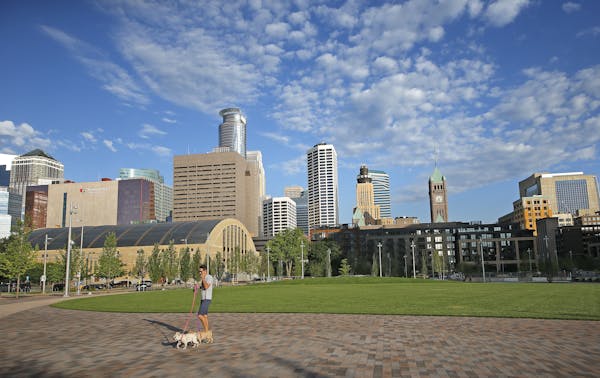CANTON, Ohio – This shrinking factory town, seeking a hipper image to attract young people, tried a new tack this year: legalizing outdoor drinking.
Taking a page from warmer spots known for street parties, such as New Orleans and Memphis, the town best known as the home of the Pro Football Hall of Fame marked off 42 blocks of its downtown as an "outdoor refreshment area." In that zone it is now legal to carry a drink into the streets, where art and music festivals often attract thousands of people.
Beginning in the 1950s, many cities banned open containers of alcohol in public. Now Canton and several other cities are bringing it back — in a controlled fashion — to appeal to millennials and attract tourists and conventions.
In addition to Canton, other Ohio cities including Lancaster, Lorain, Middletown and Toledo launched public drinking areas this year, as did Mississippi cities such as Biloxi and Gulfport. In both Ohio and Mississippi, state law had to change before the cities could adjust their rules.
Last year, Nashville carved out a public drinking area between the convention center, a hotel and the Country Music Hall of Fame and Museum, hoping that groups would be more likely to book all three venues if visitors could drink as they walk between them. And Lincoln, Neb., and Mobile, Ala., created public drinking districts in 2013.
Typically, the drinks must be in plastic cups, rather than in bottles or cans. And in most places, security guards or police officers patrol the borders of the district to make sure people don't carry their beverages outside of it.
"You have boomers and millennials both seeking an urban lifestyle that's driving demand for more nightlife districts," said Jim Peters, who advises cities on how to take advantage of that desire. In 1983, Peters founded the Responsible Hospitality Institute, which is funded in part by beer, wine and spirits retailers.
Nightlife, including public drinking, can be a "magnet," Peters said. "But once people start living there, they may not like all the noise and litter, so restrictions come," he said.
Generally the experiments have proceeded smoothly, though last summer there were two shootings in Mobile's Lower Dauphin Street Historic District, where public drinking is legal. In response, the City Council approved an emergency measure in August banning public drinking after midnight, two hours before many bars close.
Canton credits the new policy for larger weekend crowds, peaking at 10,000 in June, or 3,000 more than last year's high. Participating businesses levy a $1 surcharge on alcoholic drinks "to go" to cover the cost of hiring off-duty police officers to provide additional security. Bar employees are tasked with picking up litter.
Most bars and restaurants support the idea because they think it will boost sales and revenue.
Police in Canton have reported only a slight increase in arrests and citations within the public drinking area, though they have issued more traffic tickets. Police attribute the uptick to having more officers downtown.
Canton's master plan stresses the need for a vibrant nightlife to attract the kind of educated millennials who have turned around other Rust Belt factory towns. Canton's population is 60 percent of what it was in the 1950s, and it collects about half as much tax revenue.
